With the growing need and interest in using clean or carbon-free energy, the Polish Geological Institute—National Research Institute (Polish Geological Survey) conducted a study to assess the potential for low-temperature geothermal energy in the country. The research was carried out between 2021 and 2023, and the findings were presented at the 49th Workshop on Geothermal Reservoir Engineering at Stanford University in February 2024.
The main goal of the Geological Survey study is to identify the subsurface temperature regime in the context of local geology, tectonics, hydrogeology, and human influences. As such, in 2021, five boreholes were drilled (99 mbgs) in diverse locations across the country to account for different natural conditions (locations on the map).
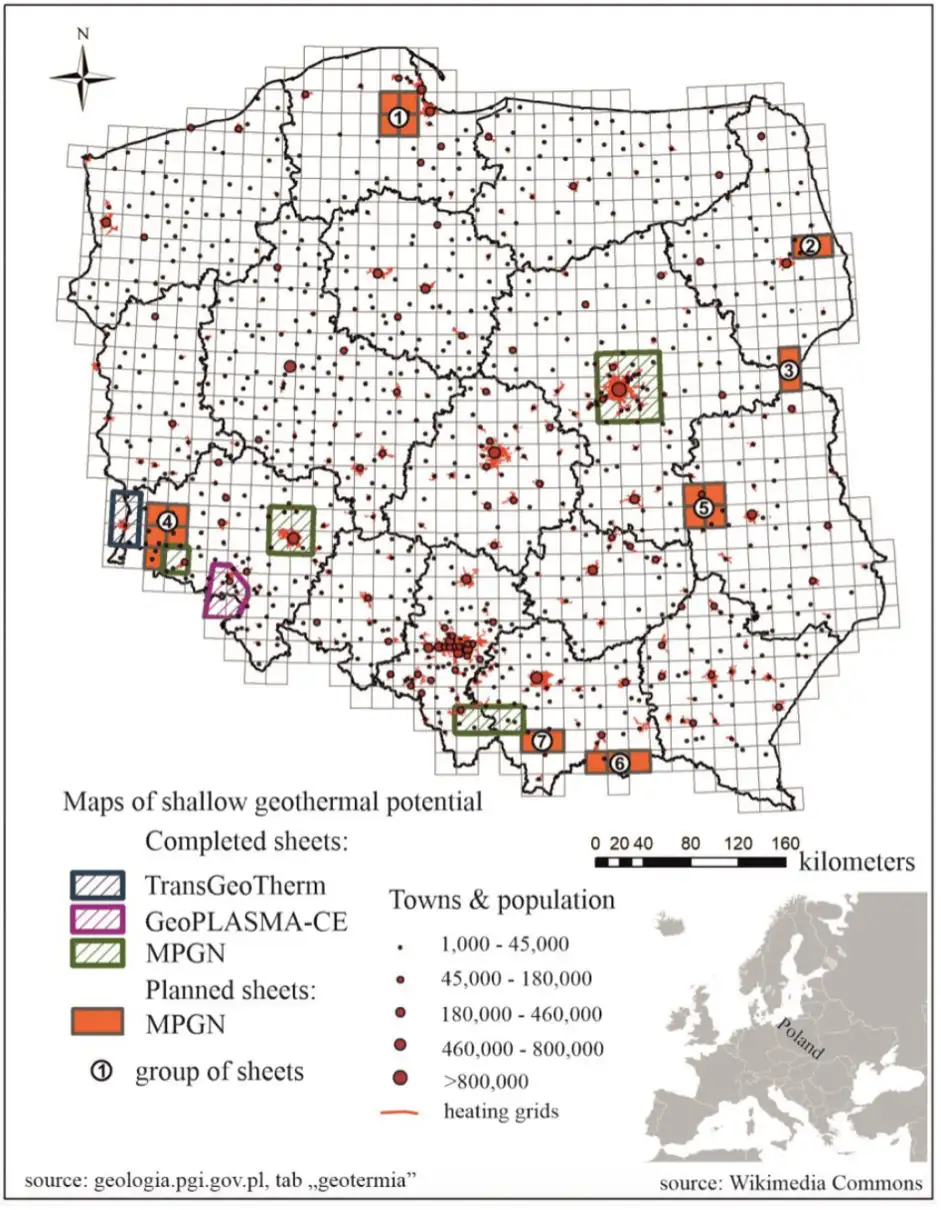
The chart below shows the different characteristics of each of the borehole locations, including altitude, rock types, aquifer characteristics, and land use type.
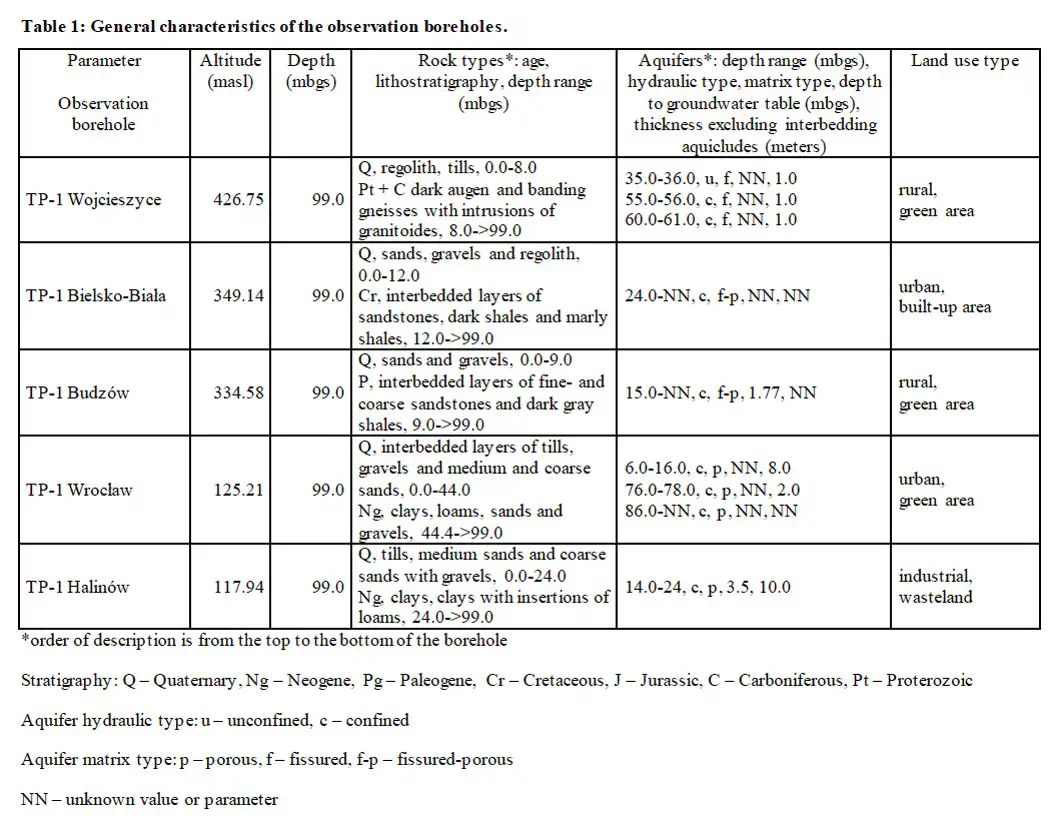
Each of the boreholes was equipped with a heat exchanger with a single U-pipe. Temperature measurement, logging and thermal response tests (TRT) were performed within the boreholes. Below is the design for each of the observation boreholes.
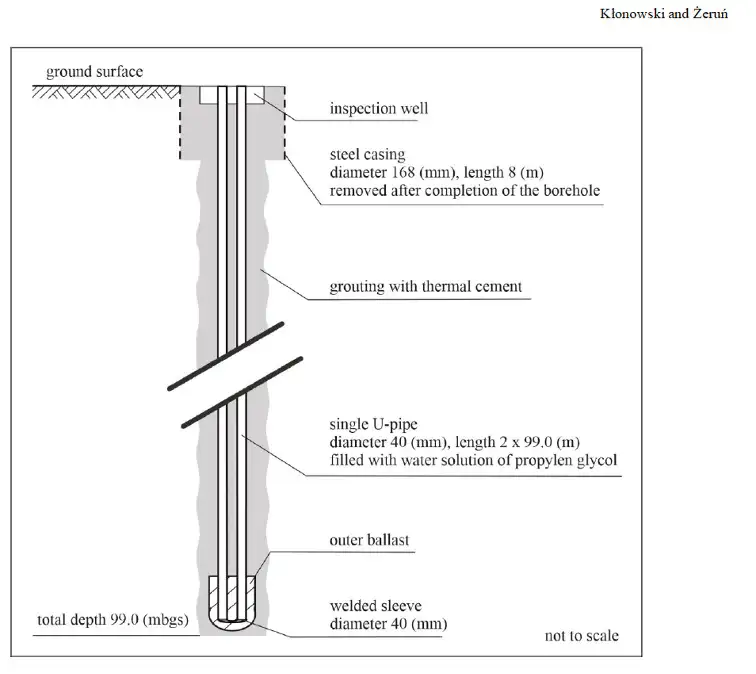
In 2021, test temperature measurements were taken, and TRT tests were conducted. TRT is a conventional testing method for determining the heat transfer properties of a borehole heat exchanger and surrounding ground to predict the thermal performance of a ground-source energy system. The Geological Survey took regular and quarterly temperature measurements in 2022 and 2023.
Temperature profiling was conducted using a temperature datalogger as part of the quarterly measurements. Datalogging was completed using a Solinst Levelogger 5. Solinst Leveloggers are well-known for recording changes in water levels, but they also contain a temperature sensor that records accurate water temperature readings.
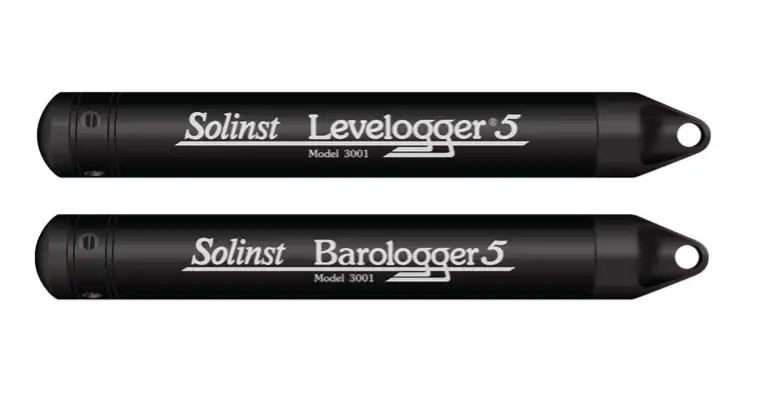
The Levelogger 5 was set to record temperature every 4 seconds and lowered down the U-pipe on a Kevlar rope at a slow, consistent rate. Subsurface readings were compensated by a Barologger 5 that was recording at the same interval at the surface of the borehole. The high-resolution, depth-dependant temperature measurements provided nearly continuous results, allowing for detailed temperature analysis.
The depth-dependent temperature patterns measured for the studied observation boreholes are alike to a major extent in 2022 and 2023. For each temperature profile, the depth zones associated with different subsurface temperature variability, which depend on various factors, can be identified.
Results from the shallow subsurface (up to 2-5 meters deep) show a strong correlation between temperature and climatic conditions (atmospheric air temperature, precipitation, solar radiation, etc.), creating a zone of daily and seasonal temperature changes.
Below-subsurface temperature variability gradually decreases with depth and is less dependent on external factors. Usually, at a depth of 15-25 meters, depending on location, temperature stabilizes and is close to the value of average ambient air temperature at the given location.
This subsurface temperature zone, the zone of neutral or transient temperatures, can persist to about 50-60 meters of depth or even more. However, it shows some small variability, i.e. it may slightly increase or decrease. The thickness of that zone is very different and varies very much between the individual observation boreholes.
Deeper down, the subsurface temperature starts to increase according to the value of the geothermal gradient, however, this effect is not observed clearly for all the studied boreholes.
The temperature measurement results are in the chart and graphs below.
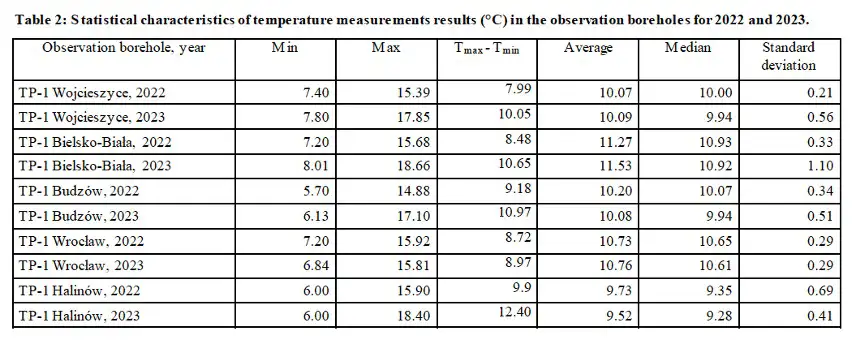
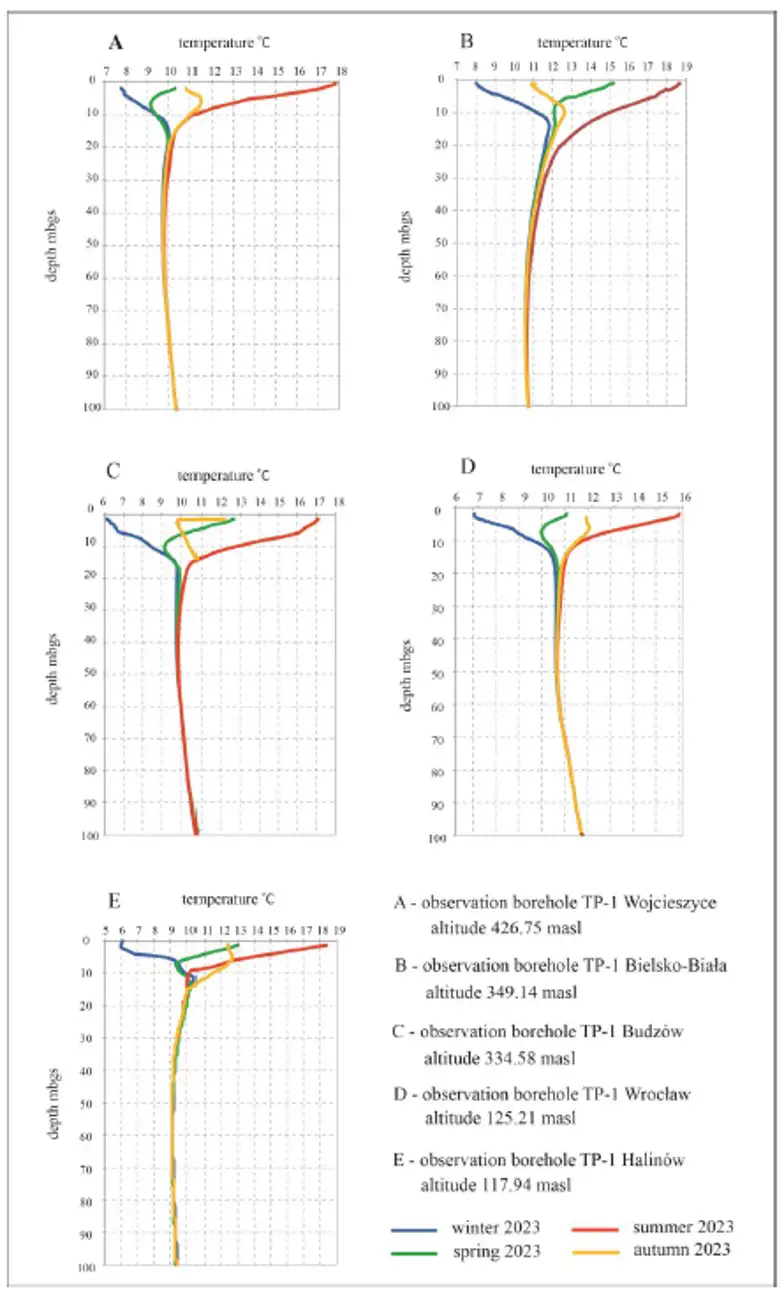
In the coming years, plans are to drill another five boreholes in various regions of the country, including Lower Silesia, Pomerania, Podlasie, and the Lublin region.
Overall, the research results provided data for developing low-temperature geothermal potential maps for the studied areas in Poland.
This study has aided the Polish Geological Survey’s overall task of assessing resources and environments to support the development and use of low-temperature geothermal energy as a renewable energy source in the context of decarbonizing the national economy.
Read the full results of the study here:
Solinst Thanks Igor Kubicki of AquaTerra.pl, Solinst Exclusive Distributor in Poland, for providing the original article, which was presented at 49th Workshop on Geothermal Reservoir Engineering at Stanford University, Stanford, California, February 12-14, 2024, SGP-TR-227.
